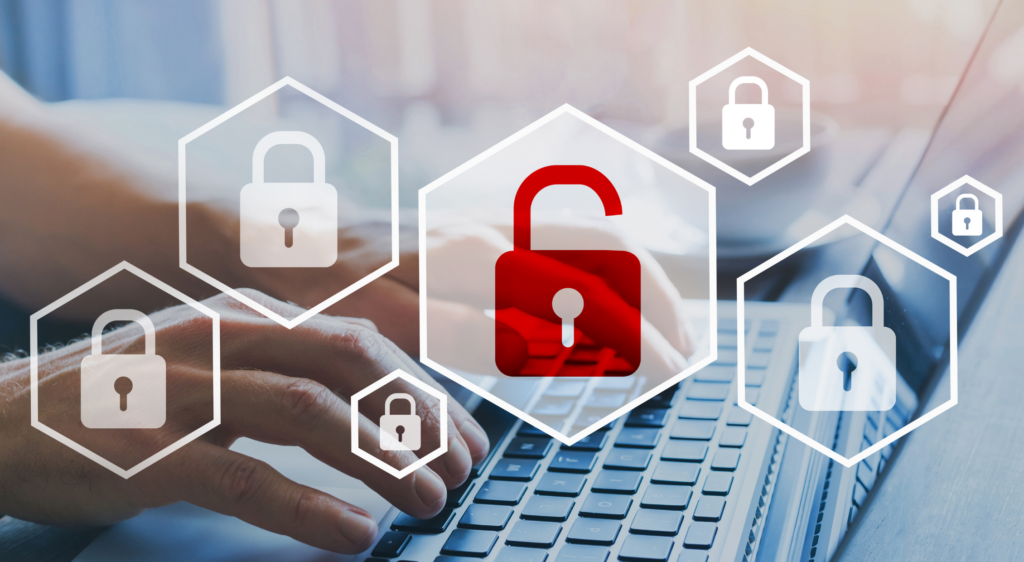In today’s digital age, businesses are realizing that they need to leave legacy systems in the past and embrace more modern, nimble, cloud-based solutions. Solutions that provide better speed, safety, and scalability. Given this, it’s no surprise that there has been a surge in the adoption of SaaS applications to help organizations and their employees achieve their goals, in a much more streamlined way.
SaaS applications have become essential to a wide range of operations. From messaging platforms and financial software to project management tools and CRMs. While SaaS is great, it’s not perfect. It, too, has weaknesses that can be exploited by threat actors. Therefore, it is essential that security and IT teams are aware of and take action against growing SaaS security risks.
Employees are some of the first to raise their hands in support of SaaS. Wing Security’s 2023 State of SaaS report showed that the average user had 28 SaaS applications in use. The same report also showed that the average organization had seven new applications added each month. While these applications undoubtedly enhance productivity and collaboration, the significant number of SaaS applications also enlarges an organization’s attack surface. Each additional one introduces a potential entry point for cyber threats, creating more potential vulnerabilities that security teams must manage.
As the digital landscape evolves, ensuring the security and integrity of this expanding SaaS ecosystem becomes paramount. Organizations must strike a balance between harnessing the benefits of SaaS and proactively protecting their organization against Shadow IT and the multiplying avenues of potential attacks.
What are Risky SaaS Apps?

Risky SaaS applications are those that exhibit vulnerabilities and security flaws, potentially putting organizations at increased risk. Such applications might have known weaknesses that can be exploited by threat actors. Additionally, risky SaaS applications could have weaknesses that lead to sensitive data being exposed. Non-compliance with security standards and regulations further compounds this risk, as it opens the door to potential legal and reputational consequences. Organizations that rely heavily on SaaS apps, without having the ability to properly monitor and control their usage, essentially elevate their company vulnerable to Shadow IT.
Identifying Risky SaaS Usage
Risky SaaS usage emerges when organizations lack the necessary oversight and management over their SaaS layer. Weak access controls can lead to unauthorized or malicious users accessing critical applications, paving the way for potential breaches or data leakage. Further risk arises from using outdated versions of SaaS applications, leaving security vulnerabilities unaddressed. Inadequate employee training contributes to risky usage, as users might recklessly engage in practices that compromise security. The reliance on third-party integrations without evaluating their security measures can also introduce additional risks. So, to mitigate risky SaaS usage, organizations must enforce robust monitoring, implement proper access controls, ensure up-to-date software, and provide comprehensive training to employees.
Navigating the Shadow IT Risk

Shadow IT, which is the usage of unauthorized and unapproved software or technology, is a significant concern because it allows employees to open the door that introduces potentially risky SaaS applications into their organization. While the intentions of the employees may be innocent, ultimately, introducing unvetted applications (without the knowledge of the security team) into the organization could lead to a number of concerning security risks. From ransomware attacks to non-compliance and reputational damage, unauthorized SaaS can seriously harm a business if not kept in check.
One of the biggest challenges organizations face is when security teams lack the necessary visibility into their SaaS stack. This is because potentially risky or recently breached SaaS applications may be hiding in the shadows within the SaaS layer. Security teams are also most likely unaware of the permissions granted to these applications, leaving the organization totally vulnerable to serious security threats. Without proper oversight, organizations cannot ensure the safety of their data and infrastructure, making it challenging to assess and mitigate potential risks. This lack of control can lead to security breaches and compromise the organization’s overall security posture.
Today, employees can use whichever applications they want, whenever they want. This is a nightmare for security and IT teams who want to know what technology or software is being used within their organization. They also want to know what permissions employees have granted to these applications, and how much of their sensitive data is exposed. Shadow IT introduces risks that could jeopardize much more than just the security of an organization. It also jeopardizes reputation and compliance So, while SaaS is great, its usage has been out of control – until now.
3 Quick Tips to Ensure Secure SaaS Usage
- Evaluation and Integration:
- As a starting point, security teams should leverage discovery capabilities that provide visibility over all SaaS applications. This allows them to determine if they adhere to both security and compliance standards – before integration. This entails a thorough examination of each app’s security score and potential vulnerabilities. Thanks to new SaaS Security Posture Management (SSPM) solutions, much of this work is done automatically.
- Insider Risk Management:
- Today’s reality is that employees are onboarding SaaS through decentralized means. They are using apps on demand without going through the proper channels. This reckless employee behavior should raise a red flag for security teams. By being alerted to any suspicious activity in or around an application, security teams can stay ahead of malicious (and also negligent) user behavior. For example, the sudden downloading of data in mass quantities can be a serious cause for concern. With effective risk detection and response, the impact of insider threats can be significantly minimized.
- Access Review Management:
- With the existence of Shadow IT and the use of SaaS applications, CISOs are grappling with numerous substantial challenges. Recognizing the need for time-saving solutions and streamlined processes to manage continuous workloads, CISOs increasingly turn to the automation capabilities inherent in SSPM. A prime example of this would be to tap into the benefits of automated remediation pathways. This highly valued feature not only enhances efficiency but also empowers security teams to tailor remediation according to their preferences.
In wrapping up, the safe usage of SaaS applications relies on a shared commitment between security teams and employees. As we navigate the ever-evolving landscape of SaaS security risks, it’s clear that while challenges do exist. The potential benefits of SaaS are immense. Embracing SaaS while making sure the relevant security practices are in place ensures that organizations can harness its capabilities, all while protecting themselves from SaaS risk. Ultimately, it’s the combination of security teams and employees that will ensure SaaS is worth the risk.
